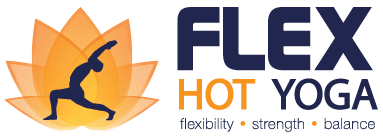Posture of the month: Astavakrasana (Eight Angle Pose)
Never judge a book by its cover
In October, we will practice Astavakrasana, the Eight-Angle Pose. What on the surface appears to be yet another challenging arm balance, deep down is a powerful spiritual reminder that we are more than just our physical appearance, and that yoga is a practice for anyone and everyone, regardless of their physical appearance or ability.
The Sanskrit name consists of three syllables: Astha (eight), Vakra (bent / curved) and Asana (seat / pose / posture). It is named after a famous sage, Astavakra, the spiritual guru of King Janaka.
Read on to find out more about the legend of this truly remarkable man, and the benefits you can expect when practicing Astavakrasana.
The benefits of practicing Astavakrasana
At first glance, Astavakrasana is a rather intimidating pose. As an advanced arm balance, it requires (core) strength, hip mobility and excellent balance. However, as with all postures, practice makes perfect, and learning the preliminary postures to build strength will eventually get you there. Here are the benefits you will reap from practicing Astavakrasana:
Stretches and builds strength in many of your muscles, e.g. your arms (wrist flexors and extensors, biceps, triceps and shoulders), legs (quadriceps, gluteus minimus, gluteus medius and gluteus maximus, inner thighs, hamstrings), chest (pectoralis major) and abdominal area.
Tones and strengthens your pelvic floor
Stimulates the Manipura Chakra
Strengthens your wrists
Increases your endurance as you learn to hold up your owcn body weight
Improves your focus and balance.
Can help to relieve stress.
As you are mastering Astavakrasana, it helps boost your confidence (on the level of physical ability) and self-esteem (on a mental level)
Sage Astavakra’s remarkable story
Image Source: Hindu-Blog.com
Sage Astavakra was born into a family of rishis. His father Kahoda was an advisor of king Janaka of Mithila. One day, whilst his wife was still pregnant, Kahoda practiced reciting slokas (Sanskrit verses from the scriptures of the Vedas) but made spelling mistakes. The baby, even in the womb, had grown accustomed to the correct spelling and laughed. Kahoda’s ego was hurt, so he cursed he baby to be born crippled, at eight places in his body.
Despite this dreadful condition, Astavakra grew to become a learned scholar, even as a child. Years later, his father was defeated in a debate. Some accounts say he was killed, other say he was imprisoned… Either way, Astavakra made an arduous journey to the palace to plead with the king for his father’s life.
Upon entering, the illustrious throne room was filled with sages and advisors. Upon seeing him, they burst into laughter, making fun of his hideous appearance. And Astavakra? Laughed with them! Puzzled, the king asked him why he, of all people, was laughing. To which the young boy replied that he must have entered a debate of cobblers, since they were only able to see the skin, the surface, yet failed to see the substance of a person. King Janaka realised the truth and apologised. He was given permission to enter a philosophical debate, which allowed him to free his father. Kahoda, humbled and proud of his son, took him to a holy river and lifted his curse.
The Ashtavakra Gita or “song of Sri Ashtavakra” is the detailed account of this dialogue - a conversation about the nature of the Self, reality and bondage. For more accounts of Astavakra’s wisdom and more details on the Ashtavakra Gita, have a look at the DNA of Hinduism website.
So are you ready to learn and master Astavakrasana? Then come along to Flex regularly and practice with us! There are over 25 classes/week, and we will practice it daily during all of October 2022!
This month, we acknowledge Stephen from Adventure Yoga and the DNA of Hinduism website for the insights that have informed this blog post.





